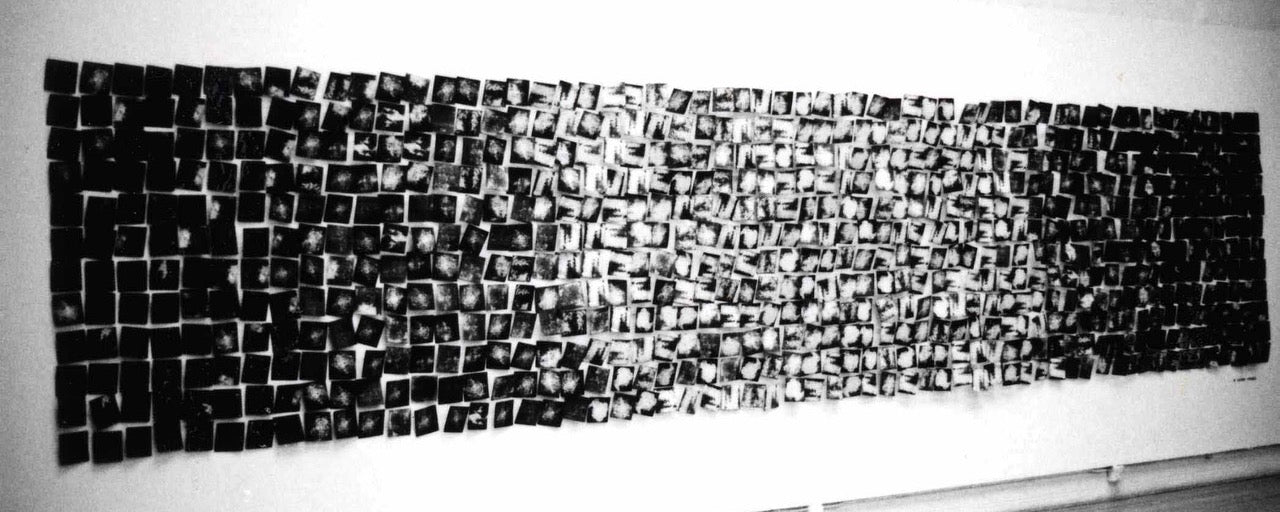In 2016, OOKKUU reached out to Portland based artist Alison Foshee, to have her design a new textile for the Cobrina Sofa. In this article, Foshee gives us insight into her outlook and work as an artist, and the process of creating the "Desert Life" textile.
*********************************************************
 Growing up shy has its advantages. In an effort to stay unseen, you learn to observe. You recognize the traits of shyness in others, appreciate the shadow, the subtle gesture and the mistake. There is an innate understanding that behind every surface identity there is a hidden story. The same holds true for objects. Within the form and function of a utilitarian object is an aesthetic and conceptual second life. For example, the office staple is designed to keep things together, yet it is highly flexible. It simultaneously represents the human characteristics of intellectual control and the supple tenacity of perseverance. My job as an artist is to find these stories.
Growing up shy has its advantages. In an effort to stay unseen, you learn to observe. You recognize the traits of shyness in others, appreciate the shadow, the subtle gesture and the mistake. There is an innate understanding that behind every surface identity there is a hidden story. The same holds true for objects. Within the form and function of a utilitarian object is an aesthetic and conceptual second life. For example, the office staple is designed to keep things together, yet it is highly flexible. It simultaneously represents the human characteristics of intellectual control and the supple tenacity of perseverance. My job as an artist is to find these stories.
An example of Foshee's work with staples. |
This interest in the second life of objects began, oddly enough, through the traditional medium of printmaking. While printmaking is often associated with meticulous processes and environmental controls (acid baths, the methodical grinding of stones, the inking of plates, and the handling of fine paper), it is also about the happy accident. The pooling of color in a monotype, or an uneven bite of acid, trains the eye to see beauty in the imperfect. During my Master’s work at the San Francisco Art Institute, I would happily let my steel plates melt away in the acid baths to strip away any preconceived notion of what a print should be. The resultant works functioned as both sculptural objects and prints, most often presented in installation format. By allowing this traditional medium to be experienced in a new way, its second life could be unearthed. I gravitated towards the reuse movement for similar reasons. Like working with destroyed printing plates, I found that the process of teasing form from scrap activated my artistic creativity. In addition, reusing objects demonstrates the positive outcomes of conservation and that art making does not require specialized materials.

An example of Foshee's print work from her time at the San Francisco Art Institute.
When initially approached by OOKKUU to create textile work for the Cobrina sofa, I was intrigued by the idea of translating my work with transient objects to a medium of permanence that would enrich homes for years to come. I was inspired by the Cobrina’s clean lines, fine craftsmanship, and elegant yet utilitarian vision, all of which are in line with mid-century design, to create the textile “Desert Life."

Foshee's "Desert Life," designed for the Cobrina Sofa.

 Designed to evoke the sculptural landscape of the west, “Desert Life” is representative of my non-traditional image building and is constructed from recycled pre-printed office labels, found at a local reuse store. It was during the discovery phase of working with this material, that I realized that the negative space revealed through the removal of the labels resembled the organic patterns and textures found in nature. Scalloped discs, razor sharp ellipses and rounded rectangles became the knobby surfaces of cacti that so boldly define arid landscapes. In addition, the repeating patterns of factory die-cuts evoked the nostalgia of mid-century sculptural forms with an emphasis on geometric design. Layers of acrylic wash were used to mimic the rich patina of these sun-drenched plants. The finished design both complements and contrasts with the lines and grain of the sofa, allowing the piece to be experienced in a new way. It is with these thoughts that "Desert Life" was created and applied to a new medium for a new purpose. I'm happy to have had the opportunity to work with OOKKUU to create “Desert Life,” and I hope it can go on to inspire creativity in others.
Designed to evoke the sculptural landscape of the west, “Desert Life” is representative of my non-traditional image building and is constructed from recycled pre-printed office labels, found at a local reuse store. It was during the discovery phase of working with this material, that I realized that the negative space revealed through the removal of the labels resembled the organic patterns and textures found in nature. Scalloped discs, razor sharp ellipses and rounded rectangles became the knobby surfaces of cacti that so boldly define arid landscapes. In addition, the repeating patterns of factory die-cuts evoked the nostalgia of mid-century sculptural forms with an emphasis on geometric design. Layers of acrylic wash were used to mimic the rich patina of these sun-drenched plants. The finished design both complements and contrasts with the lines and grain of the sofa, allowing the piece to be experienced in a new way. It is with these thoughts that "Desert Life" was created and applied to a new medium for a new purpose. I'm happy to have had the opportunity to work with OOKKUU to create “Desert Life,” and I hope it can go on to inspire creativity in others.
